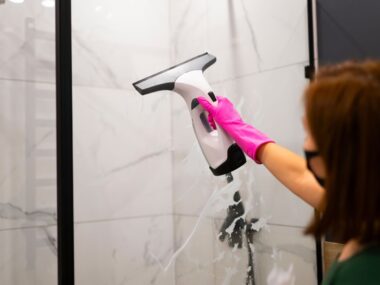Vinyl flooring is a popular choice for many homeowners because it is durable, easy to clean, and affordable. If you are considering vinyl flooring for your home, you will need to know how to install it properly. Here are some tips for vinyl floor installation:
1. Make sure the subfloor is clean and level. The subfloor is the layer of flooring beneath the vinyl. If it is not level, the vinyl will not lie flat and may eventually bubble or peel up.
2. Lay out the vinyl tiles or sheets in the room before installation to get an idea of the pattern.
3. Start in one corner of the room and work your way out.
4. Use a straight edge and a utility knife to cut the vinyl to size.
5. Peel off the backing and stick the vinyl to the floor. Firmly press down on all sides to adhere it properly.
6. Seal the edges of the vinyl with adhesive caulk or strips of duct tape to prevent water damage.
7. Allow the adhesive to dry completely before walking on the vinyl.
how to install vinyl sheet flooring on concrete
Concrete must be clean, dry and free of debris before you can install vinyl sheet flooring. You’ll also need to patch any cracks or holes in the surface. Once the concrete is prepped, follow these steps to install your vinyl:
1. Cut the vinyl sheet to size using a sharp knife or utility blade.
2. Peel off the backing and place the vinyl sheet on the floor.
3. Use a rolling pin or hand roller to smooth out any bubbles or wrinkles.
4. Trim off any excess vinyl using a sharp knife or utility blade.
5. Apply adhesive caulk around the edges of the vinyl to create a seal.
6. Allow the adhesive to dry completely before walking on the floor.
Choose the right vinyl flooring for your home
Not all vinyl flooring is created equal. There are different types of vinyl available, and each has its own advantages and disadvantages. Here are a few things to keep in mind when choosing vinyl flooring for your home:
1. Budget: Vinyl flooring is generally more affordable than other types of flooring, but there are still a wide range of prices.
2. Durability: Some vinyl flooring is more durable than others. Choose a product that is rated for high traffic areas if you have children or pets.
3. Installation: Vinyl flooring is easy to install, but some types are easier than others. If you plan to do the installation yourself, choose a product that is designed for easy DIY installation.
4. Maintenance: Some vinyl flooring is easier to maintain than others. If you have allergies or sensitivities, choose a product that is hypoallergenic and easy to clean.
Prepare the surface for vinyl floor installation
1. sweep the surface to remove any dirt or debris.
2. use a vacuum cleaner with a soft brush attachment to remove any remaining dirt or dust.
3. fill any cracks or holes in the surface with concrete filler or epoxy putty.
4. sand the surface smooth with 120-grit sandpaper.
5. wipe the surface with a damp cloth to remove any dust from sanding.
6. apply a primer to the surface if recommended by the vinyl flooring manufacturer.
7. allow the primer to dry completely before proceeding with vinyl floor installation.











